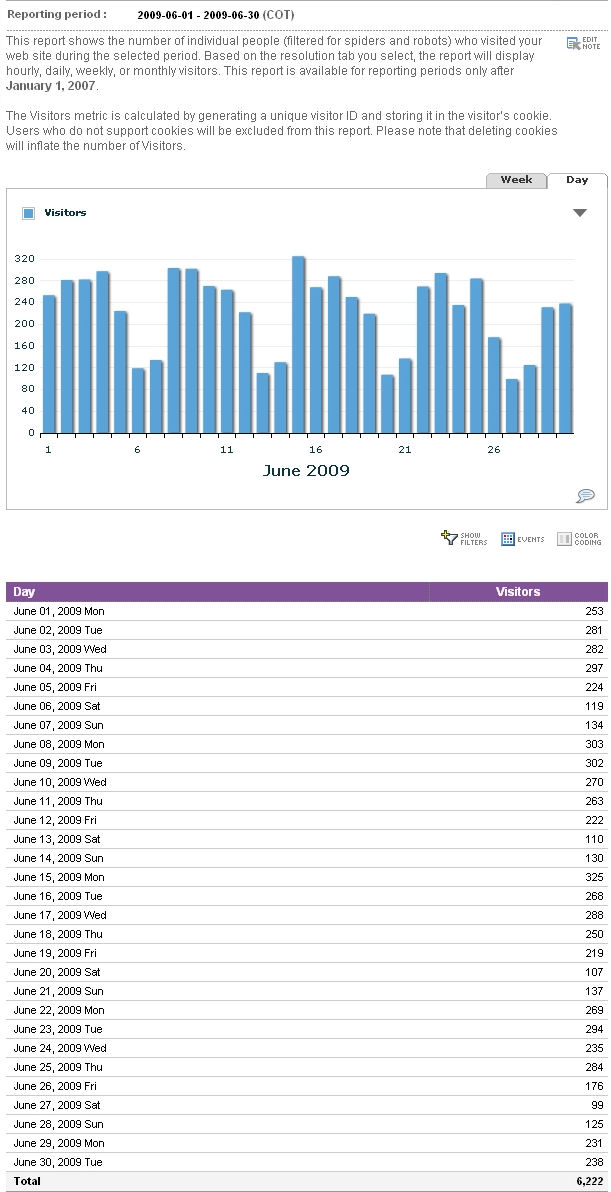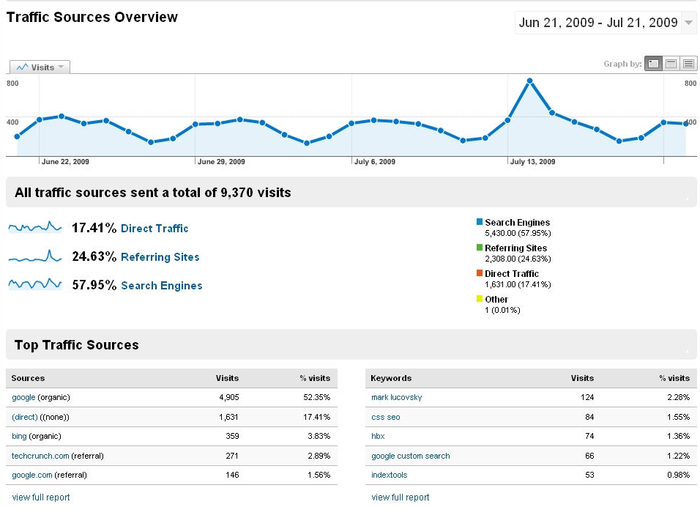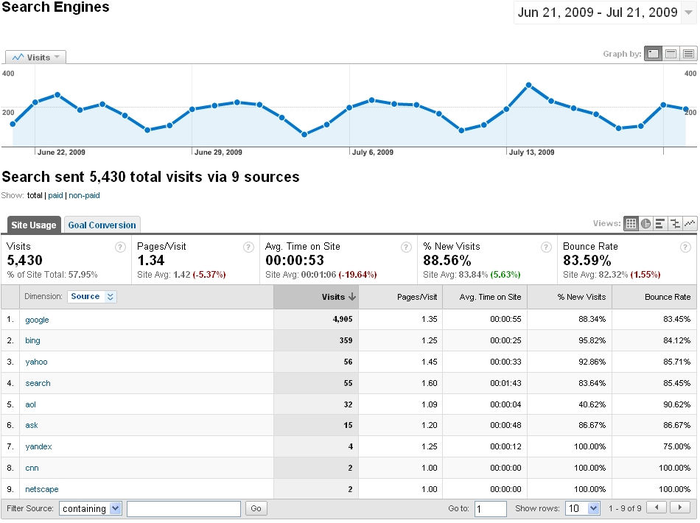The most fundamental objective of any SEO project should be to drive
the bottom line. For a business this means delivering more revenue with
favorable ROI. As a predecessor to determining the level of ROI impact,
the SEO practitioner must focus on increasing the volume of relevant
traffic to the site. This is a more important objective than anything
related to rankings or number of links obtained. More relevant traffic
should mean more revenue for the business (or more conversions for those
whose websites are not specifically selling something).Today’s web analytics tools make the gathering of such data
incredibly easy. Two high-quality solutions are available that are
completely free: Google Analytics (http://www.google.com/analytics) and Yahoo! Web Analytics
(http://web.analytics.yahoo.com/). Figure 1 shows a sample of
basic “unique visitors” data from Yahoo! Web Analytics.

Digging a little deeper, you can see the sources of the traffic as
well, as you can see in Figure 2, which shows a
Google Analytics report.
As an SEO practitioner, it will be natural to want to delve into
more detail—specifically, to break down the search engine traffic and
understand that better as well. Once again, this is easy to do in both
tools (and in most of the commercially available tools out there), as
shown in the Google Analytics screen shot in Figure 3.


This type of data allows you to see which search engines are
delivering the majority of the traffic, and perhaps flag potential
problems. In Figure 4-16,
Yahoo! and Bing seem unusually low for this site.
Also, over on the right of Figure 4-16 you can see that
this site has an unusually high bounce rate. The site owner should
probably work on some things to make the site a bit stickier.
Yet another thing to look at is which pages are getting the most
traffic. Figure 4 shows
a sample report on that from Yahoo! Web Analytics.

In fact, the number of things you can look at in analytics is nearly
endless. It is fair to say that there is too much data, and one of the key
things that an SEO expert needs to learn is what data is worth looking at
and what data is not worth looking at.